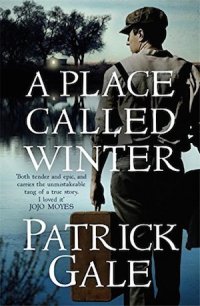Fiction – Kindle edition; Text Publishing; 208 pages; 2024. Translated from the Swedish by Saskia Vogel. Review copy courtesy of the publisher via Netgalley.
The Singularity is a hypnotically powerful novel about the strength of a mother’s love for her missing teenage daughter. But it’s also a compelling story about what it is like to be displaced and to lose your language, country and identity.
The author, Balsam Karam, is of Kurdish ancestry and has lived in Sweden since she was a child.
Unnamed country
The story is set in an unnamed country, somewhere hot, framed between the mountains, “half desert” and the sea, where tourists come to enjoy the food and the weather, but where many locals live in impoverished conditions.
Most of the action occurs on the corniche, a coastal road in a tourist hot spot, home to cafes, restaurants and a bustling food market. There are glistening skyscrapers and shiny new hotels built next to old buildings covered in bullet holes, evidence that the city was once ravished by war.
In the opening pages, an unnamed woman wanders up and down the corniche, pressing a flyer — “Has anyone seen my daughter? 17 years old, missing since dawn on 1 May. Help me find her, help me get justice” — under the windshield wipers of parked cars.
Later, a woman on a business trip, witnesses the desperate mother throw herself off a cliff and into the water below, making orphans out of her three younger children.
The tale of these two women — the mother who dies by suicide and the woman in town on business — are intertwined. Their personal backstories echo one another. Both are displaced; both have lost children.
Original style and voice
The Singularity is told in a refreshing style, employing different techniques to tell the story of what it is like to be a refugee, to lose loved ones and to endure racism, poverty and violence on an everyday basis.
It treads some distressing territory — including self-harm, stillbirth and a litany of girls and young women going missing — but it does so in a matter-of-fact way.
The author uses the mother’s three surviving children as a singular chorus to explain the events leading up to their sister’s disappearance. They are fully aware that it is simply history repeating: years earlier a cousin disappeared who has never been found, a loss that reverberates across the generations.
The grim subject matter is made bearable by the delicacy of the prose and the compelling voices. It’s a deeply human story set everywhere and nowhere, and because of that it strikes a universal tone: these losses and disappearances play out all across the world, every day, causing immeasurable heartache and trauma.
Admirers of Adania Shibli’s Minor Detail will find much to like here.
This is the author’s first novel to be translated into English; let’s hope her debut novel, Event Horizon, published in 2018, gets translated soon.
The Singularity was nominated for Sweden’s prestigious August Prize and shortlisted for the 2021 European Union Prize for Literature. It has been published in the UK by Fitzcarraldo Editions.
I read this book as part of Reading Independent Publishers Month 4 #ReadIndies, hosted by Lizzy and Kaggsy. This event, which runs throughout February, is designed to showcase the books published by independent publishers across the world.
Text Publishing is an Australian independent press based in Melbourne. It publishes a broad range of fiction and non-fiction. It has been awarded the ABIA Small Publisher of the Year three times and won the Leading Edge Books Small Publisher of the Year in 2018 and 2019. You can find out more about them here.








 First published in Germany in 1974, The Lost Honour of Katharina Blum is widely regarded as a German classic and is listed in
First published in Germany in 1974, The Lost Honour of Katharina Blum is widely regarded as a German classic and is listed in 






